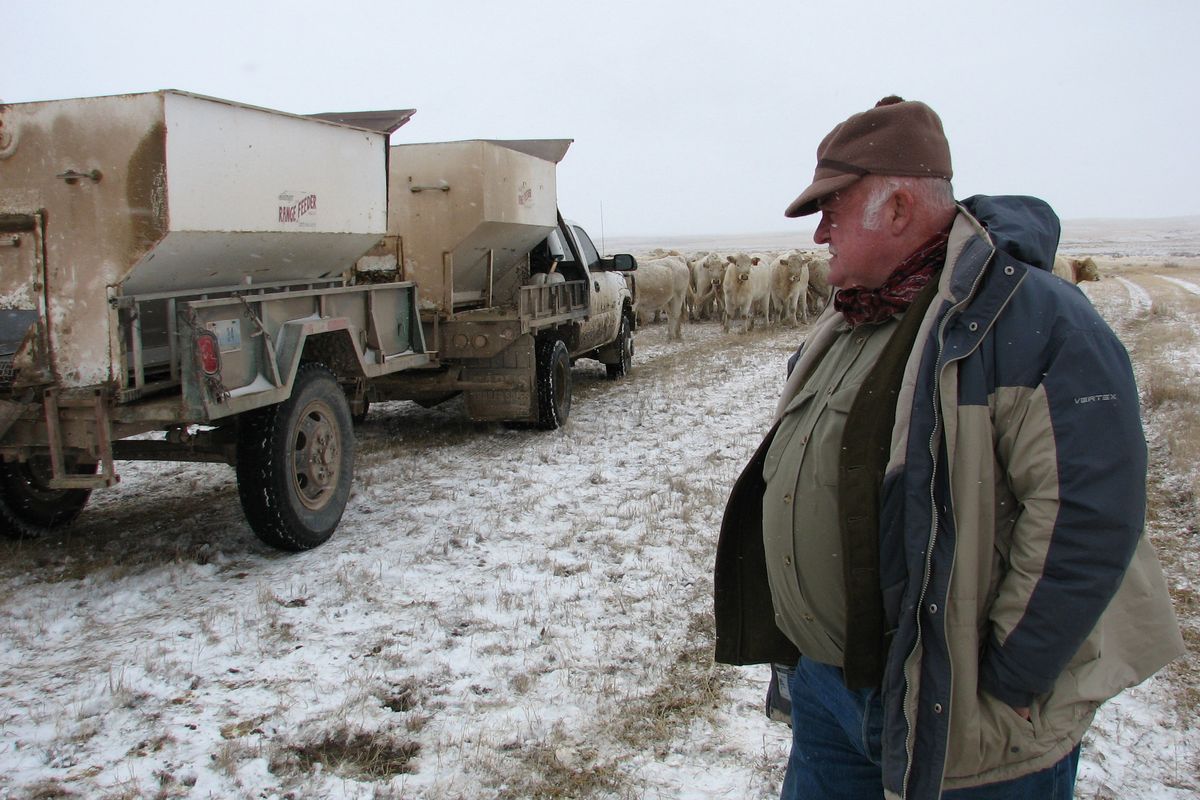Grasshoppers dreaded
Western, Plains states brace for worst infestation of pest in decades

NEWCASTLE, Wyo. – Grasshopper infestations have taken on mythic tones here on the arid prairie of northeastern Wyoming – they blanket highways, eat T-shirts off clotheslines and devour nearly every scrap of vegetation on ranches and farms.
The myth may come closer to reality this summer than at any time in decades in several states in the West and the Plains.
A federal survey of adult grasshoppers last fall indicated that parts of Wyoming, Montana, South Dakota, North Dakota, Nebraska and Idaho could face costly grasshopper infestations this summer.
Ranchers and farmers as well as federal and municipal pest control agencies are praying for well-timed cool and wet weather to stifle the young grasshoppers when they hatch around May and June.
In the meantime, they’re scrambling to line up the millions of dollars it will cost to battle an outbreak with aerial insecticide.
“They’re grass eaters,” said Tom Wright, a rancher near Newcastle in northeast Wyoming about 20 miles from the South Dakota border. “They’ll eat the leaves and leave the stem. And they will eat the stems finally.
“When they’re really thick, people say they’ll eat T-shirts on a line,” he said as he recalled a time in the mid-1980s when the grasshoppers were so thick that you couldn’t put your hand on the shady side of a fence post without squashing one.
Grasshoppers are found across the United States, but outbreaks of pest species are most common in the Plains and Western states. Different species range from a length of under an inch to more than 3 inches.
They provide some ecological benefits, serving as a food source for other animals. However, some pest species are capable of eating their body weight daily in vegetation and can waste up to six times more by dropping forage to the ground.
Making matters worse is the prevalence of migratory species in the latest surveys – insects that can fly 60 miles in a day.
The Wyoming acreage infested with 15 or more grasshoppers per square yard increased more than 10-fold from 2008 to 2.9 million acres last summer, according to federal surveys.
Regionwide, surveys predict at least 48 million acres of outbreak-level infestation this summer.
“In some states, we may see some of the most severe grasshopper outbreaks that we’ve seen in nearly 30 years,” said Charles Brown, the national grasshopper suppression program manager at the U.S. Department of Agriculture’s Animal and Plant Health Inspection Service.
No government agency keeps a comprehensive tally of the economic damage from grasshoppers, but the cost of spray programs can exceed a million dollars for a single county.
Last summer, when an outbreak first surfaced in Wyoming, the voracious insects hurt hay production and prompted some ranchers to downsize their herds.
Wright didn’t sell any cattle because of grasshoppers, but his calves weighed 30 pounds lighter than normal last fall as a result of the insects eating up forage. The grass damage also forced the ranch to buy extra feed to help its cows through the winter, costing about $10,000, he said.
Pest managers combat rangeland grasshoppers by using planes to spray alternating strips of land with an insecticide that kills the bugs in the nymphal stage, meaning it must be applied within a few weeks after eggs hatch.
Entomologist Scott Schell of the University of Wyoming said the insecticide, Dimilin 2L, has a very low toxicity level for mammals, reptiles and birds. It also has little effect on bees, he said.